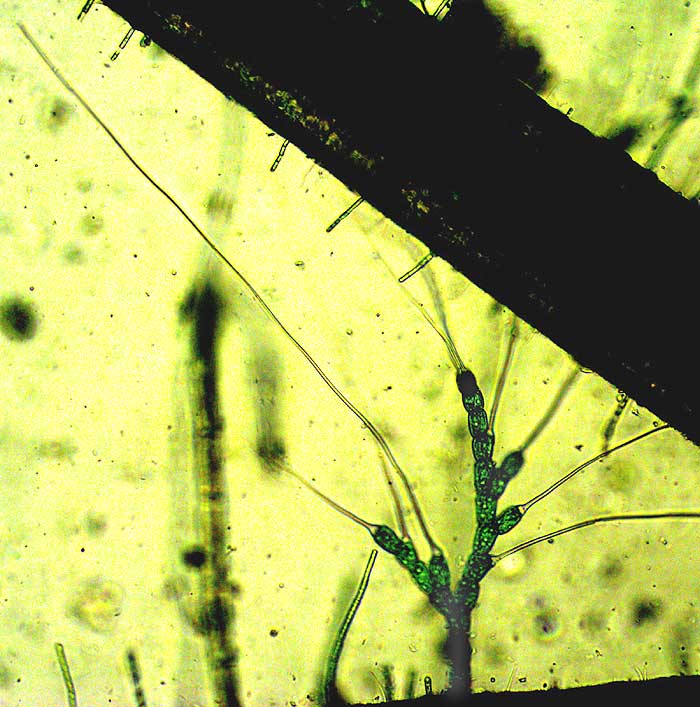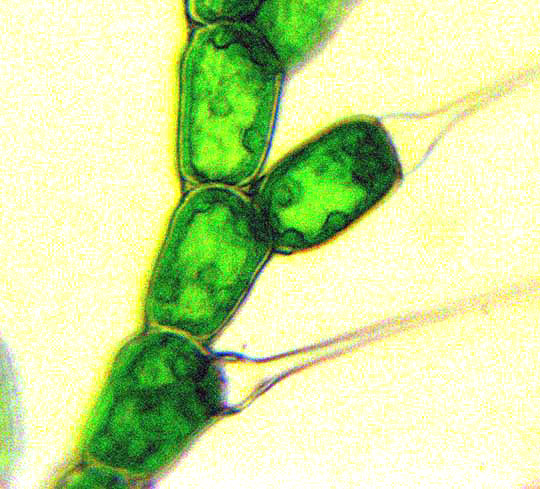Excerpts from Jim Conrad's
Naturalist Newsletter

from the March 2, 2014 Newsletter issued from the Frio Canyon Nature Education Center in the valley of the Dry Frio River in northern Uvalde County, southwestern Texas, on the southern border of the Edwards Plateau; elevation ~1750m (~5750 ft); N29.62°, W99.86°; USA
BULBOCHAETE ALGA
It was a safari stalking exotic beings attached to a feathery, thumbnail-size, green leaf of the aquatic plant called Watermilfoil, from the Dry Frio River, now suspended in a drop of water on a slide beneath the microscope. Patiently surveying scenery along the midrib, the whole field of vision was animated with gyrating, spiraling, vibrating, hungry-acting microbes, like bees and flies in a tropical swamp. In this uncanny landscape suddenly inside an angle formed by the midrib of the Watermilfoil leaf and one of its pinnae, there appeared a branching tree as otherworldly as a Boojum, a green, weirdly segmented creation whose thick branches terminated in outlandishly long, slender, stiffly sharp-pointed hairs. You can see the whole thing at the top of this page.
I guessed that it was a branching, filamentous alga, but I'd never seen an alga with such long hairs. You can see individual cells close up below:

By doing an Internet image search on the keywords "algae setae" -- setae are stiff hairs -- within seconds I found a match. We had a member of the genus BULBOCHAETE, a genus of about 110 known species, commonly known as Bulbochaete algae, with species occurring in a wide variety of freshwater habitats worldwide, but mostly in temperate and subtropical zones.
The alga body consists of three distinct kinds of cells: "holdfast cells," not visible in the pictures, anchor the alga body to its substrate; cylindrical "intercalary cells" are the green cells constituting the alga's main body, and; slender, transparent "hair cells" form the long setae. The hair cells, which number more than six and include an enlarged or "bulbous" one at the hair base, are what make this genus instantly recognizable by anyone who knows about the group, for such algal cells are unusual.
Each intercalary cell contains a single green, photosynthesizing chloroplast. Our last picture shows that each chloroplast bears several dark, spherical spots. These are pyrenoids, which are tiny organs, or "organelles," whose main function is to generate and maintain a CO2-rich environment around the photosynthesizing enzyme known as Rubisco.
In the little Dry Frio, this must be a fairly rare alga, for of all those seen during previous microscopic safaris in the river's waters, never has this species shown up.